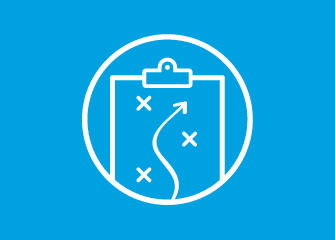How to solve the #1 challenge for B2B eCommerce
B2B eCommerce marketing has rapidly grown over the last few years, offering huge potential as a sales channel for the large number of businesses around the world that sell anything from software and hardware to medical equipment, electrical components, specialized materials, MRO parts, and supplies, and other niche products. According to a 2017 Forrester Research report, B2B transactions will reach $1.2 trillion by 2023.
Despite this potential, however, there is still a lack of understanding about this channel. Many B2B commerce pros assume that B2B and B2C eCommerce work in the same way. Although there are similarities, there are also many unique challenges within the B2B market that require a highly developed strategy in order to enable sustainable growth.
In this article, we outline some of the biggest problems faced by businesses focused on — or pivoting to — B2B eCommerce.
Lack of interest from B2B customers
Many companies find that once they’ve made their initial investment in a B2B eCommerce platform, customers are not immediately logging in and ordering. But you can change that dynamic. You just need to focus on customer onboarding.
Close to 50% of B2B eCommerce users are millennials, up from 27% in 2013 — they’re your early adopters. Those started in the last five years will likely have owners and managers who are more receptive to new technology. You can offer them incentives, rewards, and discounts for signing up and making referrals, i.e., inviting colleagues and peers. Once they’re on board, you can begin rolling out your adoption incentivization program to the more skeptical baby boomers and X generation.
No sales team support
If you do not have your sales and marketing teams aligned, you will soon notice the impact on your B2B eCommerce adoption.
Many sales teams feel threatened by the rise of B2B eCommerce, worrying that they may end up losing commissions when customers place orders online. Rather than a replacement of your sales team, find ways of working together. For example, you can turn your marketers, sellers, and contractors into advocates by commissioning, incentivizing, and rewarding them on all orders — whether placed online or ordered directly through the sales reps.
You can also build a strong support community around eCommerce channels by incentivizing online social interactions. For example, reward your eCommerce users for posting on Chatter (if using Salesforce Commerce Cloud).
Lack of clear guidance
It is also important to keep your customers updated during and after the implementation of your B2B eCommerce site. According to an HBR article, about 51% of executives listed a lack of communication as a primary cause for failure to onboard new customers.
You can start by sending personalized emails to your customers that introduce and highlight the benefits of eCommerce. You can also provide eLearning training courses that delve into the benefits of utilization and best practices for business success. B2B commerce (and B2B commerce sites) can be complex. Training videos will go a long way to solve that problem. Incentivization software enables you to incrementally reward salespeople and contractors for consuming these resources.
With the right investment of time in getting your sales team prepped and committed and a concerted effort to incentivize customer onboarding and training, your B2B commerce strategy will yield greater success.




